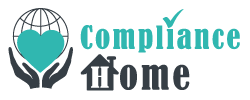
Network Web Filter
You can use a network web filter to protect your IT infrastructure from malware and ransomware attacks. By securing entire networks, a network web filter eliminates the need to download software on individual devices or update each device independently as new threats are recognized.
This simplicity of management extends to applying acceptable use policies to network users. Separate acceptable use policies can be applied from a central management portal to individual users or user groups depending on their roles, with no need to update specific devices.
Network internet filters safeguard fixed and wireless networks, even when one network supports a service in multiple locations. In some cases robust filtering mechanisms are updated in real time to offer increased security against web-borne threats, and not only protect networks against malware and ransomware, but also from spambots and phishing attacks.
Each network web filter can employ a combination of blacklists, URIBL filters and SURBL filters to block user access to websites known to host malware, websites that use whois privacy features to hide their identities, or websites that send their IP addresses with known sources of spam. Our network Internet filters also use SSL inspection and antivirus software to recognize threats in encrypted websites.
Network managers can review real-time Internet activity via the central management portal, from where it is also possible to view historic reports by user, user group or network-wide. The data in these reports can help spot gaps in network security – such as Internet traffic travelling through non-standard ports – in order the gaps are shut and network security maximized.
To allow you to manage network user Internet access, network administrators can integrate network Internet filters with current directory tools, or create acceptable use policies manually. The manual process is can be simple and include selecting which categories of online content (online gambling, P2P file sharing, pornography, etc.) to prevent access to, and then blocking them with the click of a mouse.
As mentioned previously, different acceptable use policies can be applied to individual users or user groups depending on their roles, and the filtering parameters can be fine-tuned using keyword filters and the whitelisting tasks. The filtering parameters can also be applied by bandwidth and by time, and cloud keys exist to override all the network web filter´s parameters if required.
Network administrators that would like to measure the effectiveness of the network web filter have a choice of fifty-five created reports to opt for, or can create their own customizable reports by individual user or user group.
ComplianceHome is a registered trademark. Copyright © 2025 ComplianceHome. All rights reserved.